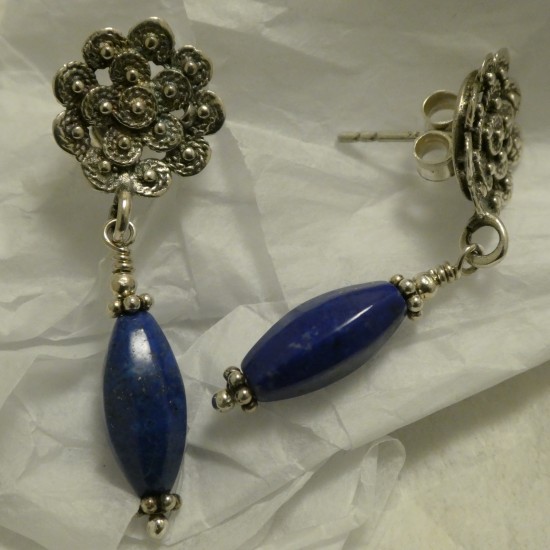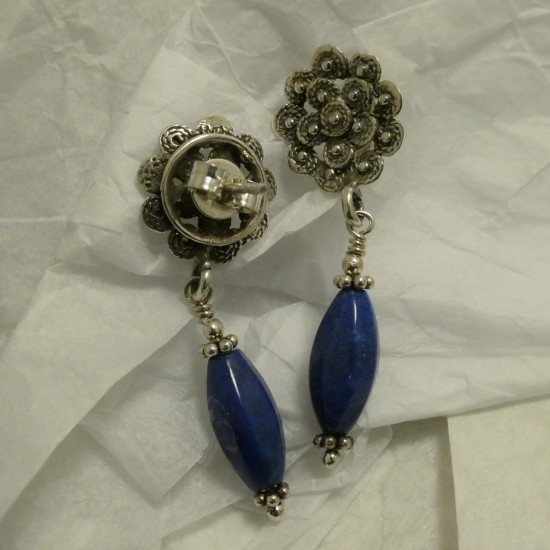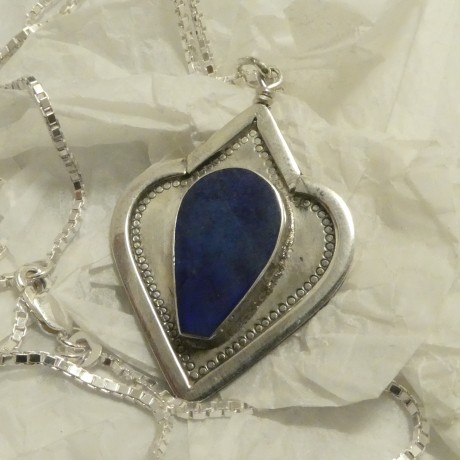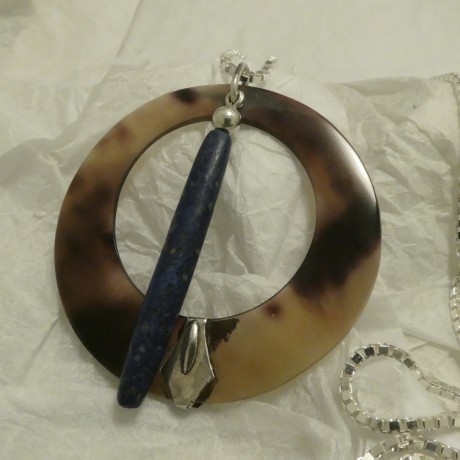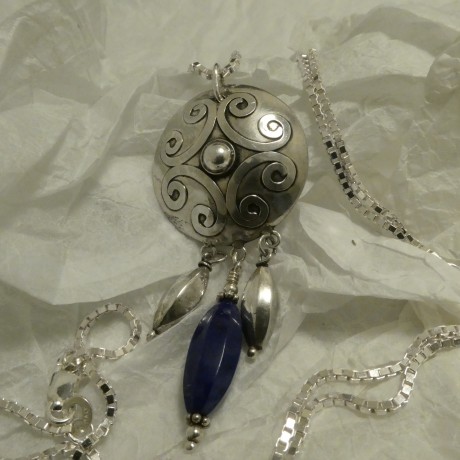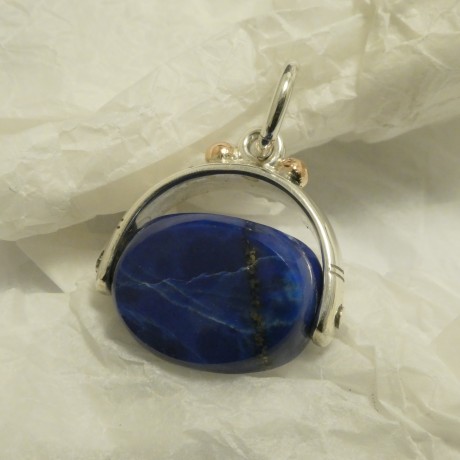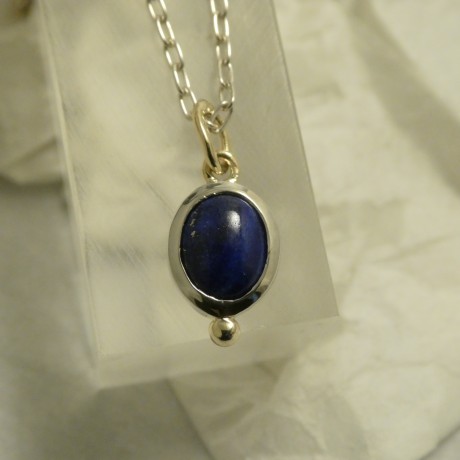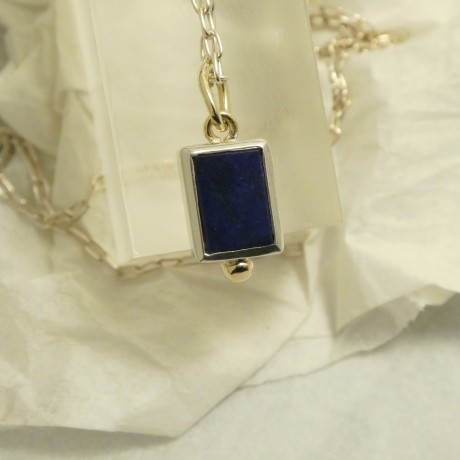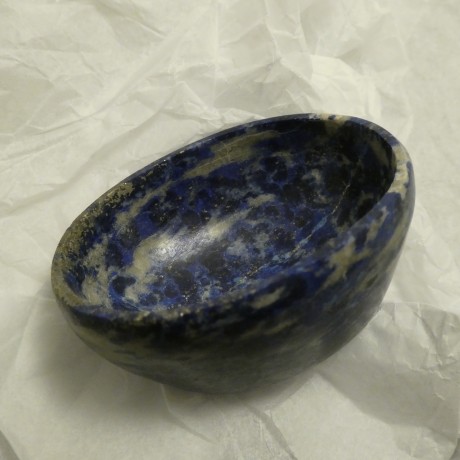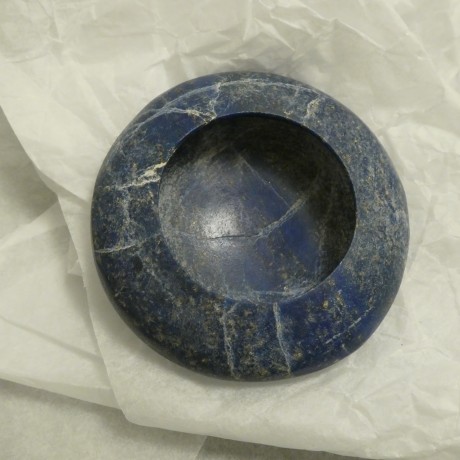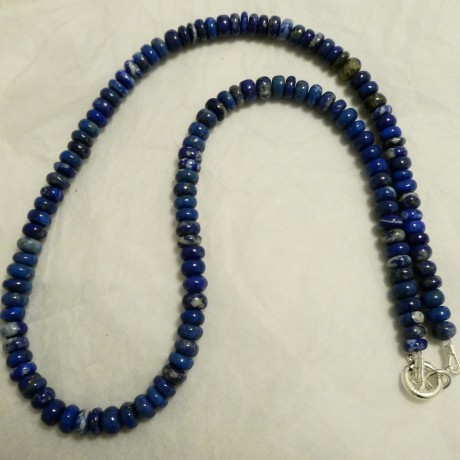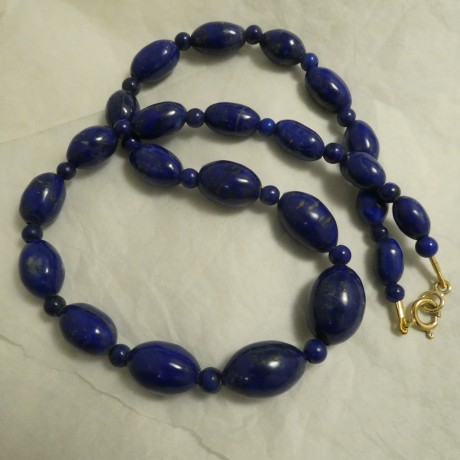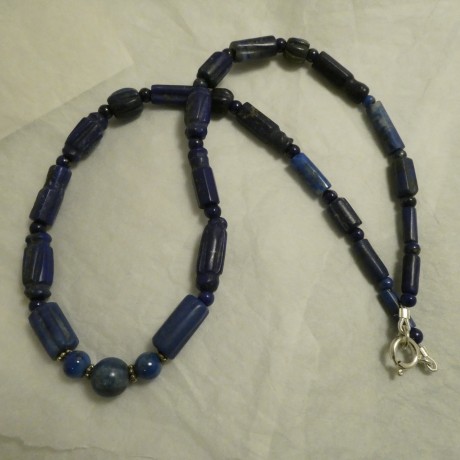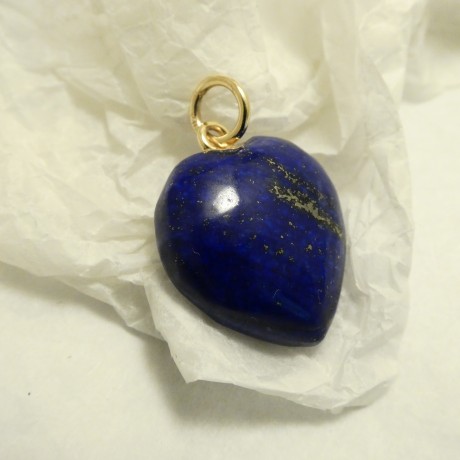Elliptical Lapis Lazuli, natural Afghani gemstone, natural ultramarine blue in well-matched handcut hexagonal beads. The Elliptical Lapis has been capped both ends with Silver, and strung on securely twist-wired Silver to hang from most finely handworked earstud rondels made up of fifteen little Silver rosettes.
Afghanistan, completely landlocked, is mountainous, and many parts of it not easily accessible, which goes some way to explaining why its considerable mineral wealth is still, in the 21st century, largely untapped. Mines here and there, small and some not so small, work deposits of tourmalines, emeralds, beryls and spinels, but there is one gemstone which has been mined extensively, and continuously, in Afghanistan for thousands of years, namely Lapis Lazuli. Most of it was exported, appreciated for its unique deep blues, and for its ease of cutting, and of taking a high polish.
The source area in Afghanistan for Lapis Lazuli is harsh terrain, mountainous and difficult of access, right up in the north-east of the country, in Badakhshan, not that far from the border of Tajikistan.
Afghani Lapis Lazuli was used in inlaid jewellery work in Ancient Egypt one thousand five hundred years before the formation of the Roman Empire. Interesting to contemplate its journey back then, from Badakhshan to the Valley of the Kings, over three thousand years ago.
Elliptical Lapis Lazuli, Silver Stud Drops
$170.00
Elliptical Lapis Lazuli beads of Afghani origin, in the natural deep blue colour characteristic of this fabled gemstone, securely twist-wired in Silver on earstud rondels of finely handcrafted Silver.
The rondels, 12mm across, created out of fifteen little handmade Silver rosettes, are old, originally old Silver buttons, re-purposed in Sydney for these very interesting earstud drops. (25mm total eardrop length, the Lapis Lazuli beads 12mm length, 6mm at widest; posts and post “butterfly” clips Silver.)
See below for further information on Lapis Lazuli.

